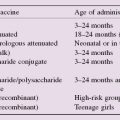Suppression of immune responses, a regular part of the management of organ transplantation, can also be of value in cases of severe hypersensitivity and autoimmunity. Most of the methods currently available are more or less non-specific, and their use is limited by dangerous side-effects (right).
The problem is to interfere with specific T and/or B cells (top centre, darker colour) or their effects, without causing damage to other vital functions. T cells can be depleted by antilymphocyte antisera (ALS) and by removing or damaging recirculating cells (which are mostly T); however, this will remove not only undesirable lymphocytes, but also others upon whose normal response to infection life may depend (B, T, lighter colour). Lymphocytes almost always divide in the course of responding to antigen (centre), so drugs that inhibit cell division are effective immunosuppressants (the same drugs tend to be useful in treating cancer for the same reason); here the danger is that other dividing tissues, such as bone marrow and intestinal epithelium, will also be inhibited. A third point of attack is the non-specific effector mechanisms involved in the ‘inflammatory’ pathways (bottom) which so often cause the actual damage, but here again useful and harmful elements are knocked out indiscriminately.
What is clearly needed is an attack focused on antigen-specific lymphocytes, i.e. an attack via their receptors (top left). This might take the form of masking the antigens by which they are stimulated, masking or removing the receptors themselves, or using them to deliver a ‘suicidal’ dose of antigen to the cell. Whether any of these experimental approaches will be effective enough to replace the present clumsy but well-tried methods of immunosuppression time will tell.
Non-Specific Immunosuppression
ALS
(antilymphocyte serum) is made by immunizing horses or rabbits with human lymphocytes and absorbing out unwanted specificities. It depletes especially T cells, probably largely by opsonizing them for phagocytosis. It has found a limited use in organ transplantation. Monoclonal antibodies to B cells, particularly to CD20 on the B-cell surface, were originally introduced to treat B-cell lymphomas (see Fig. 42), but have also proved useful in treatment of rheumatoid arthritis. Antibodies to particular T-cell subsets or surface molecules, such as CD4, may have a more useful future.
Extracorporeal Irradiation
of blood, and thoracic duct drainage are drastic measures to deplete recirculating T cells, occasionally used in transplant rejection crises.
6MP
(6-mercaptopurine) and its precursor azathioprine
Stay updated, free articles. Join our Telegram channel

Full access? Get Clinical Tree




